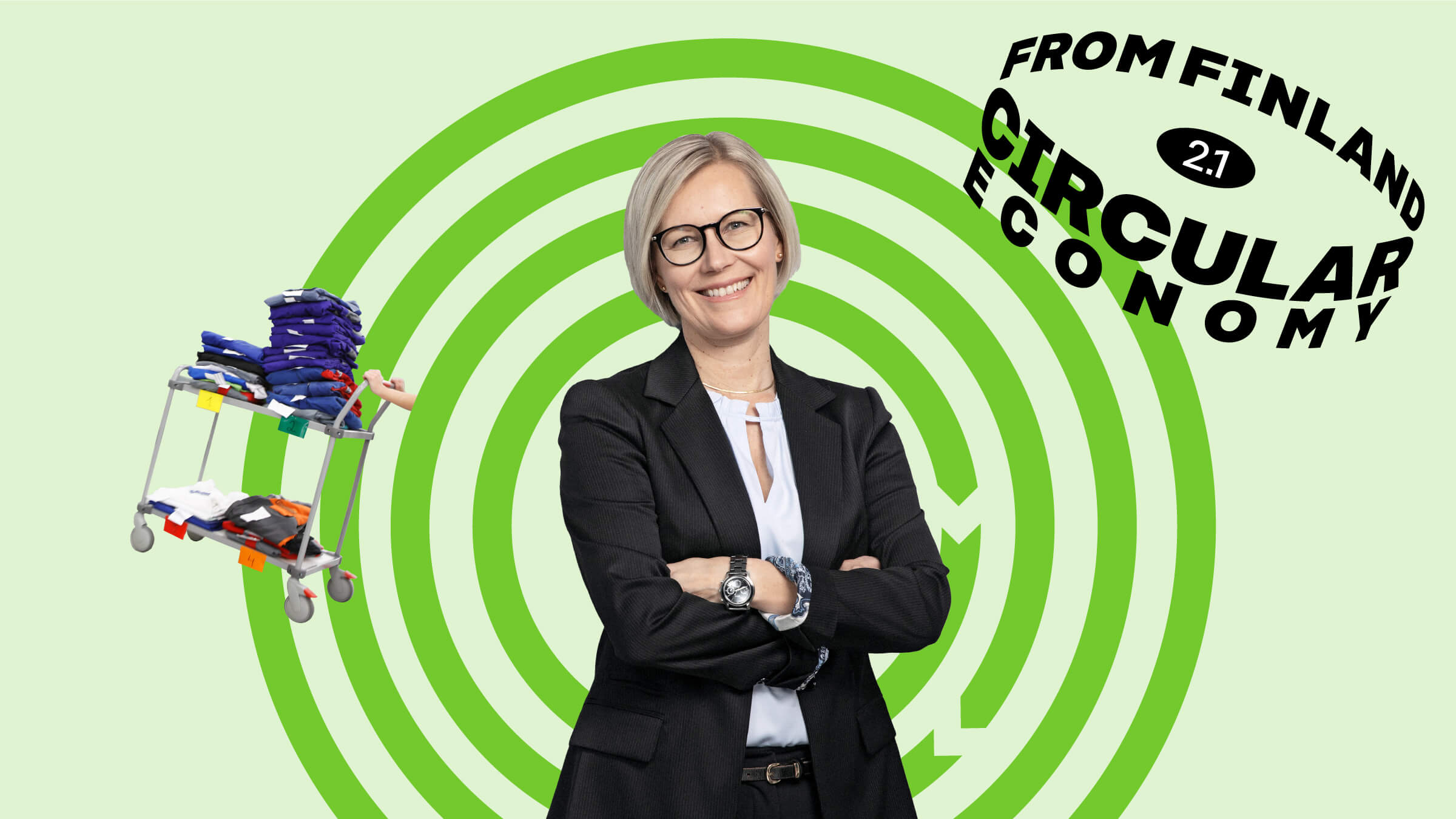“Lindström’s story begins in the 1840s. We have always offered services: first as a yarn dyeing plant, then as a laundry and, as early as the 1930s, by renting out workwear to one of our customers and caring for it. You could say that we were a pioneer in the sector.
In the 1990s, we began to focus on the textiles-as-a-service business more widely. Companies need different kinds of textiles, but owning, storing and caring for them requires money and natural resources. We provide companies with the textiles they need and look after the entire life cycle of the products, from design to reuse. We design and manufacture textiles only for the companies’ needs and make them as durable as possible. This enables us to reduce overconsumption and save natural resources.
We need to collaborate with several operators to ensure that the entire life cycle of the product is in line with the circular economy. In a traditional linear operating model, companies manufacture and sell their products. In the circular economy model, we need partners for activities such as the recycling of textiles that are no longer used and the development of new textile fibres that are more suitable for the circular economy. My duty at Lindström is to make sure that we have the right partners for the textile circular economy.
Digitisation plays an important role in the textiles-as-a-service model. Nearly all our textiles have a microchip enabling us to ensure that our customers have the right number of textiles. This way, we can move unnecessary textiles from one site to another and avoid having to acquire new textiles too early. We also monitor the use and the wear and tear of the textiles so that we can develop the products and make them last even longer.
The textile industry is still a burden on the environment. Although we maintain and wash our textiles efficiently, we want to reduce the emissions of our activities even more in the future. Our aim is to recycle all textiles that are no longer used and, for example, change to using renewable energy in our service centres.
We operate in 24 countries and have huge opportunities for growth in all of them. Although Lindström is the largest company in Finland, textiles as a service is still a new operating practice for many companies. Next, we will be looking to grow in the food industry, the medicine industry and healthcare.”










Suosittelemme
Vielä yksi